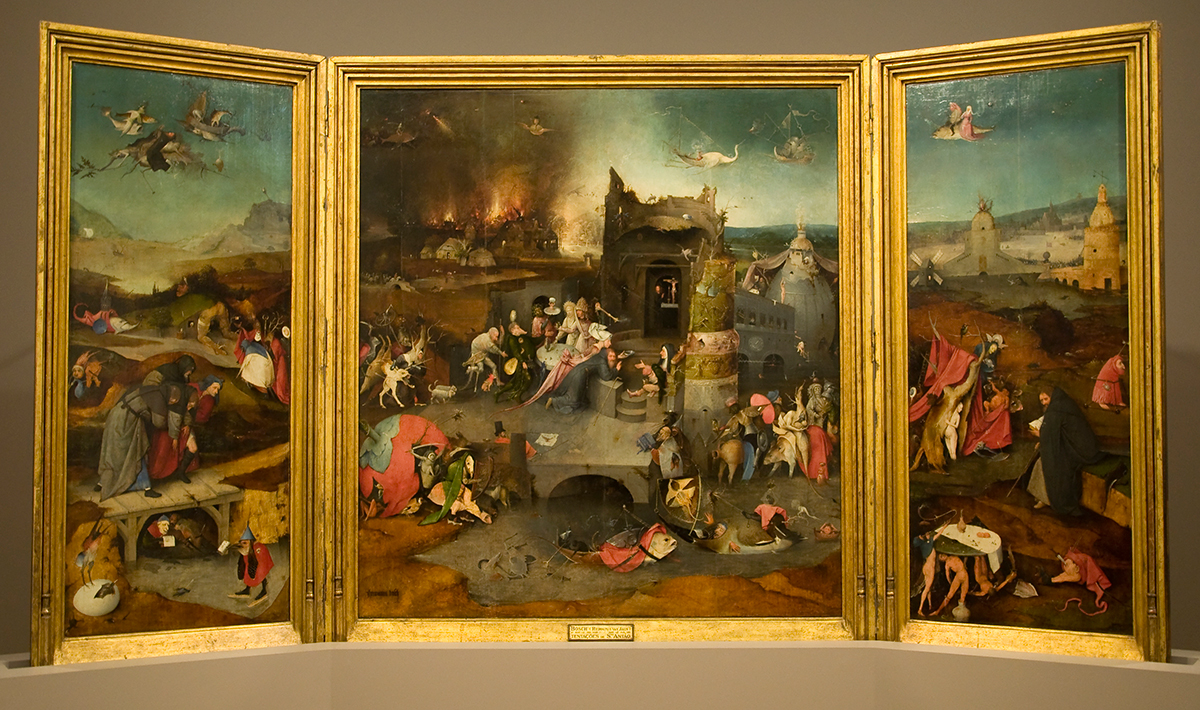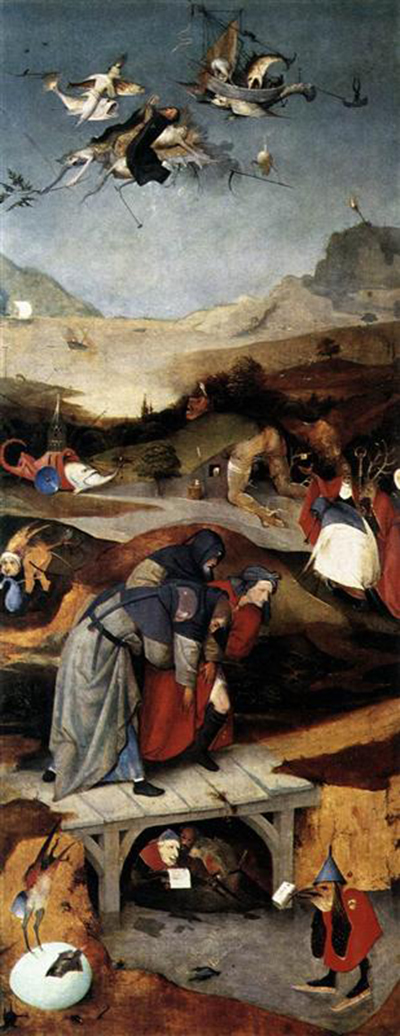The Temptation of St Anthony is amongst the finest triptyches from Hieronymus Bosch and can be found today in the Museu Nacional de Arte Antiga in Lisbon, Portugal
This artwork follows the standard format of a triptych, with a central panel joined by two side panels which are connected by hinges to allow them to open and close. Art museums will typically display them open although in some other cases the three panels maybe separated and sold on.
Thankfully, this one remains untouched other than for the occasional restorative work which is fairly inevitable considering its age. The piece has been fairly confidently dated at 1501 whilst other paintings from Bosch's career retain much wider estimates. There was also a single panel version which is now at the Prado Museum in Madrid.
Besides the date attribution, there is also a relatively good amount of information available on this painting compared to his other works. The painting shown here is the left hand panel. Such is the format of triptyches, the two panels will always be half of the width of the central panel, approximately, so that when they close there is a good fit over the central panel. They were 53cm wide each, with the centre being 119cm, with some extra space needed for hinges and the frames.
The three elements are each 131.5cm tall, making this a significant project, particularly considering the amount of detail that Hieronymus Bosch would place across his paintings. We have included the full triptych below in fairly high definition so that you can enjoy the full quality of this incredible artwork. It makes a visit to the The National Museum of Ancient Art in Lisbon well worth a visit just to see that fine artwork by itself.
Fortunately The National Museum of Ancient Art in Lisbon contains far more to see beyond just this famous Bosch painting. It ranks amongst the finest art galleries or museums in all of Portugal and has an extensive collection which concentates on European art from the Renaissance, particularly from Spain, Portugal and Northern Europe. Famous contributors include Piero della Francesca, Lucas Cranach the Elder and Albrecht Durer.
"...For the first and perhaps for the only time, an artist had succeeded in giving concrete and tangible shape to the fears that had haunted the minds of man in the Middle Ages. It was an achievement that was perhaps only possible at this very moment of time when the old ideas were still vigorous while the modern spirit has provided the artist with methods to represent what he saw..."
Ernst H. Gombrich, 1950
The vast majority of the three panels are covered in the grotesque creatures that Bosch is most famous for. There has been some evidence to suggest that members of the Spanish and Dutch aristocracy were enthusastic about any art that depicted this Christian theme, with all manner of originals and copies being exchanged for large sums of money. It is no surprise, therefore, that Bosch revisited this theme on many occasions, as did many members of his highly trained studio.





